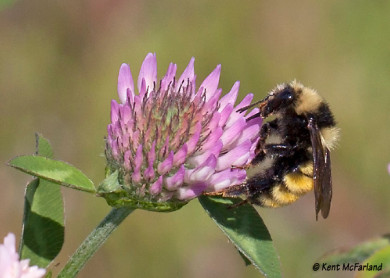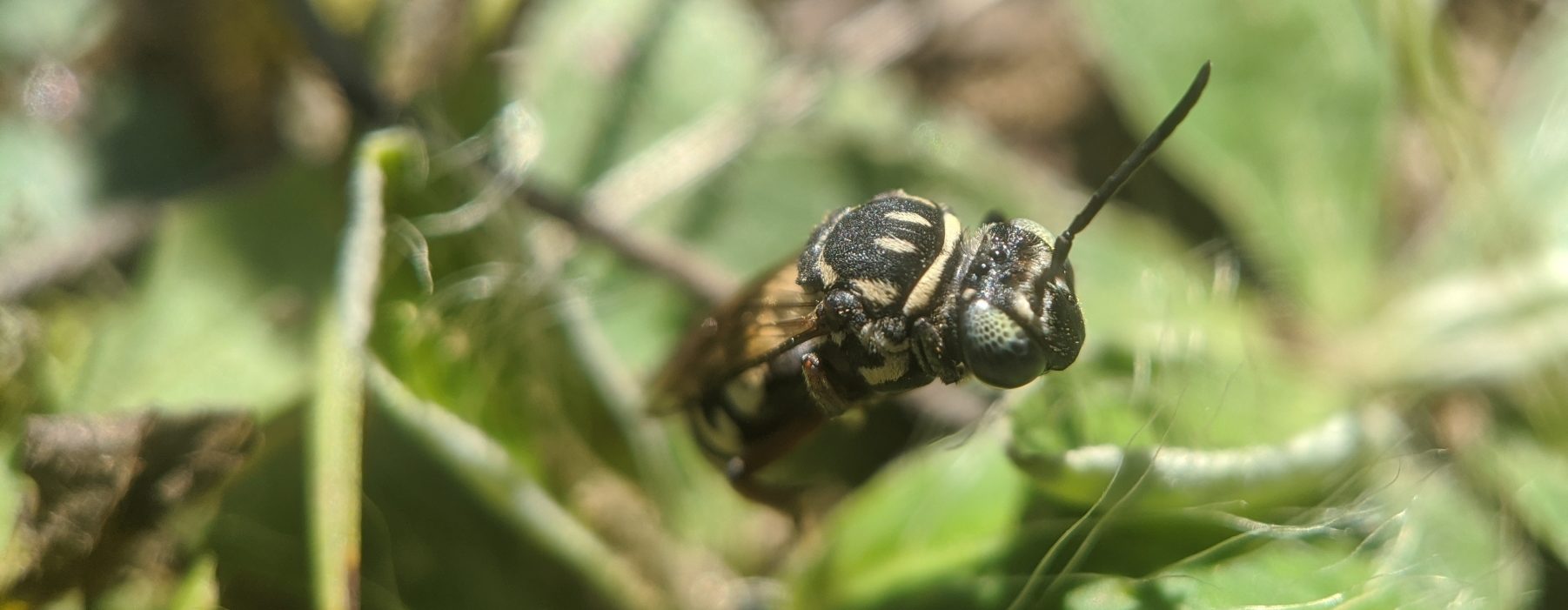Bees of all shapes and sizes form a gently humming backdrop to many landscapes, catching people’s eyes as they zip along. While some people may react to them in fear, bees play an indispensable role in many ecosystems. Without bees and other pollinators, the world’s flora would look starkly different. Nearly 90% of flowering plant species, including 75% of agricultural crops, benefit from animal pollination. The United States alone grows more than 100 crops that either need or benefit from bee pollination, and the economic value of these native pollinators is estimated at $3 billion per year.
Bees are intimately tied to flowers by their use of pollen as a protein source, making them the most important pollinator taxon in many regions. Ongoing threats to managed, non-native Western Honey Bees (Apis mellifera) have raised public awareness of bees’ importance to human wellbeing. Through this heightened focus, a spotlight has also been shown on another major concern: the possible decline of approximately 4,000 native U.S. bee species.
Although we estimate that over 300 species of wild bees inhabit Vermont, no one has ever conducted a full survey of the State’s bees. Without even a checklist of species, it is very difficult to know whether Vermont’s bee populations are healthy or declining. The Vermont Wild Bee Survey represents the first step in assessing bee populations across the state.
Starting in 2019, volunteers and project staff intensively surveyed Chittenden County, amassing over 7,000 specimens, including dozens of species never before recorded in Vermont. We are also in the process of identifying bees in the major insect collections in Vermont, including the ones at UVM and Middlebury College. Armed with this information, we are planning at least two more seasons of field work.
VTBees’ main objectives are to:
- Obtain a baseline of bee distribution at the beginning of this century for comparison to historic and future data.
- Curate and share all historic and current bee records from Vermont in an open data portal via the Vermont Atlas of Life (VAL) and the Global Biodiversity Information Facility (GBIF).
- Assess the conservation status and needs of Vermont bee species.
- Identify habitats of statewide and regional importance.
- Educate and involve more people in the discovery and protection of Vermont’s natural heritage.
Where did we begin?

Northern Amber Bumble Bee nectaring on Red Clover, the Vermont State Flower. / © K.P. McFarland
Vermont Bumble Bee Atlas Results
The Vermont Wild Bee Survey is closely modeled after the recently completed Vermont Butterfly Survey and the Vermont Bumble Bee Atlas, which spawned a passionate network of volunteer citizen scientists, a valuable baseline, and a conservation concept for some pollinators in the state.
We completed the Vermont Bumble Bee Atlas, a project of VCE’s Vermont Atlas of Life, from 2012 to 2014 with help from over 50 trained citizen scientists. Together, we searched the entire state, amassing a database exceeding 10,000 bumble bee records from all of Vermont’s counties and biophysical regions, and 81% of the state’s 255 municipalities. To compare current Bumble Bee diversity and distribution in Vermont to historic records, we assembled a database of nearly 2,000 Bumble Bee records, some from as early as 1915, from 13 public and private insect collections.
Learn more about the results from the Vermont Bumble Bee Atlas on the VCE Blog.
Beyond Bumble Bees
Bumble bees may not be representative of the approximately 37 other bee genera in Vermont. Unlike Bumble Bees, most of Vermont’s 300+ bee species are small, solitary, and poorly understood. For example, although roughly 20% of these species are pollen specialists (obtain pollen from a limited number of flower species or genera), some studies do show that many wild bee species provide important ecosystem services. In one instance, scientists at UVM associated with the VTBees project demonstrated that more than 90 species of wild bees visit Highbush Blueberry flowers on Vermont farms, contributing thousands of dollars of value to the state’s agricultural economy. And nearby in New York, Cornell scientists recently found that native bee diversity is key to better apple production.
Yet there is still a lot to learn about which species are in Vermont and how they fit into the pollination networks of the state, work that will have to continue long after VTBEES.
VTBees is a project of the Vermont Atlas of Life at the Vermont Center for Ecostudies in partnership with the Vermont Fish & Wildlife Department and Stone Environmental with collaboration from the University of Vermont Gund Institute for the Environment. Financial support has been provided by a State Wildlife Grant from the Vermont Fish & Wildlife Department, the Kelsey Trust, the Sarah K. deCoizart Article Tenth Perpetual Charitable Trust, and generous contributions from Vermont Center for Ecostudies supporters.







